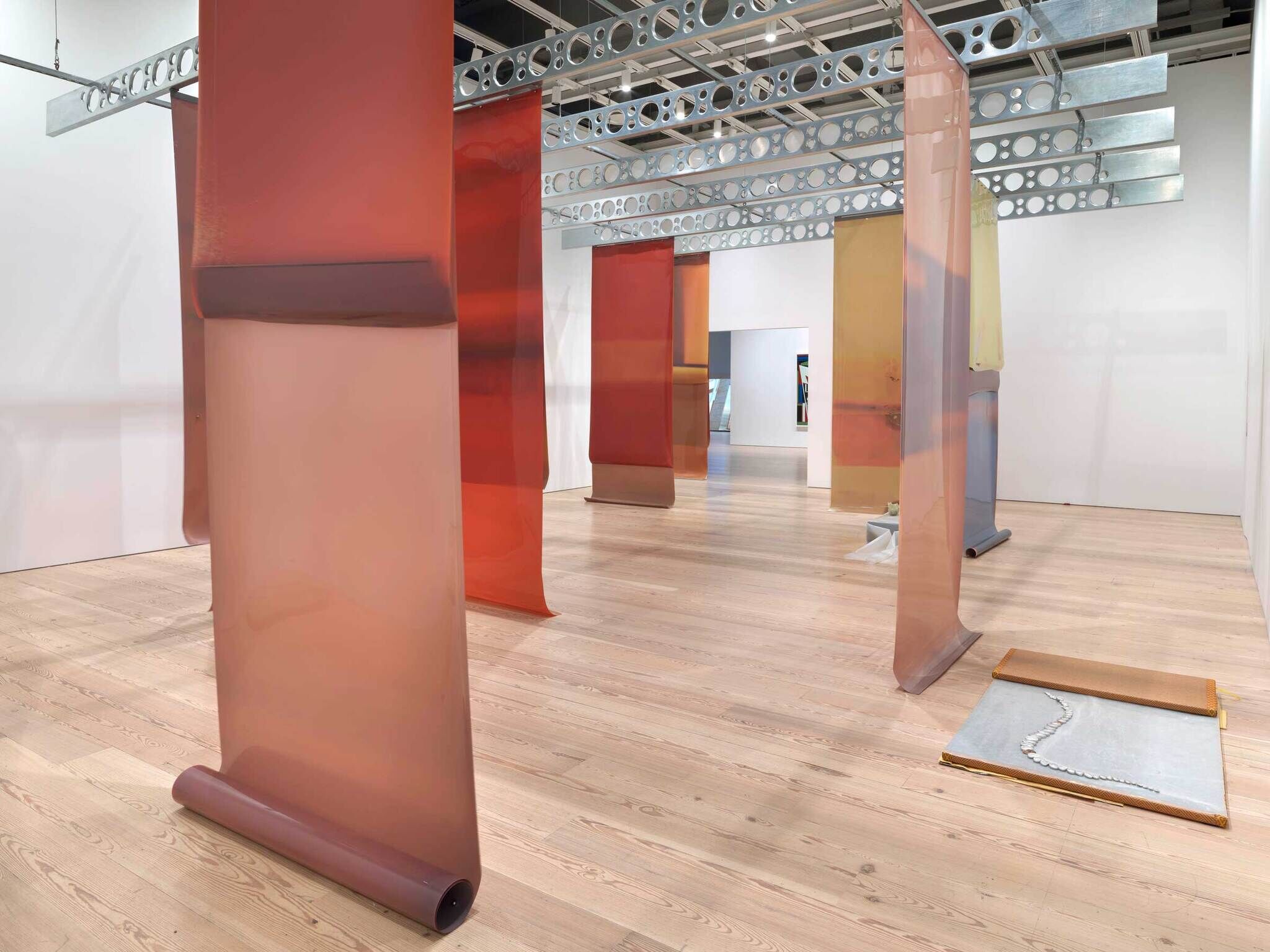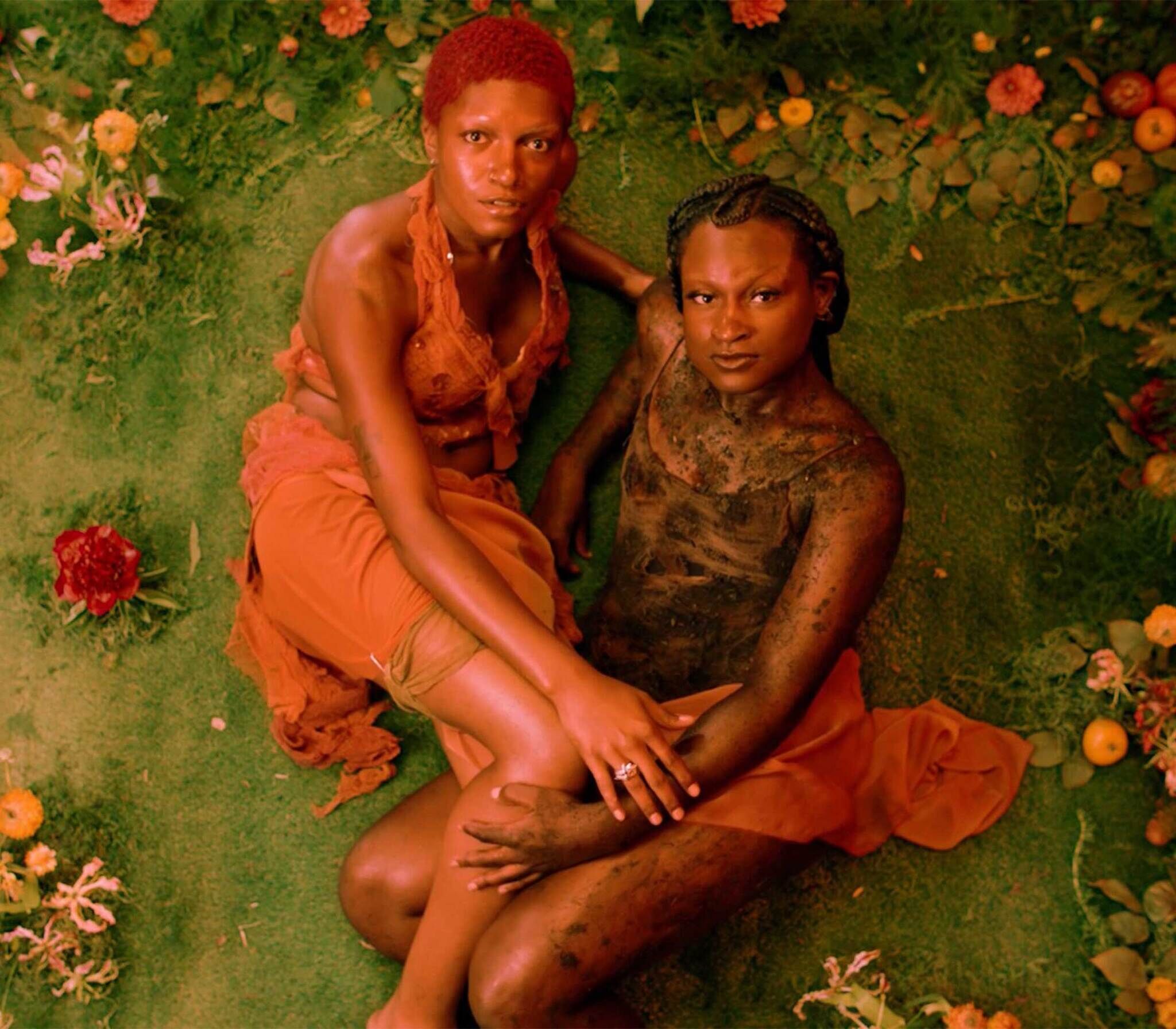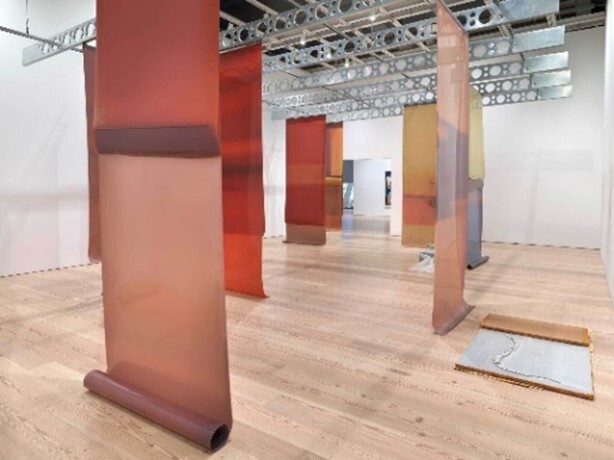Lotus L. Kang
Lotus L. Kang is a Canadian artist based in Brooklyn, N.Y. She received her MFA at Bard College and has exhibited widely in the U.S., Europe, and Canada. Her artworks and installations evolve with time as she deliberately misuses a broad range of traditional media including photography and aluminum casting. Kang often draws inspiration from her personal heritage, incorporating references to bojagi, a Korean quilt-making technique, and Korean kitchen supply stores she encountered in her upbringing. She is interested in “working with pre-existing forms and then trying to defamiliarise or deconstruct them.”
For the Biennial, Kang exhibits an installation titled In Cascades, 2023, draping what she describes as “tanned” and unfixed sheets of light sensitive film atop a scaffold of industrial steel joists. Kang situates the meaning of her works in relation to humans as “porous beings” stating “we are always in a state of becoming in relation to other bodies and the environment around us.”
By exposing light sensitive film to sunlight during the artwork’s installation, Kang encourages colors to emerge organically and reorganizes spaces, questioning what is retained and forgotten as we move through the world.
Activities
How can you use familiar techniques in new ways?
Experiment with drawing in nontraditional ways in order to shift your body’s control of or relationship to more familiar techniques. For example, try using your non-dominant hand, try drawing with two hands simultaneously, or try drawing from observation without looking at your drawing paper. Observe the results of your experiments and consider how this might inspire your next artwork.
How can an artwork evolve or change over time?
Invite students to consider how they might develop an artwork that has the potential to change over time. Experiment with hanging a partially finished work and adding onto or changing its position every time you enter the room. How might a viewer or classmate contribute to or shift this object? How does the interpretation of this object/installation transform as its physical position/placement shifts?



